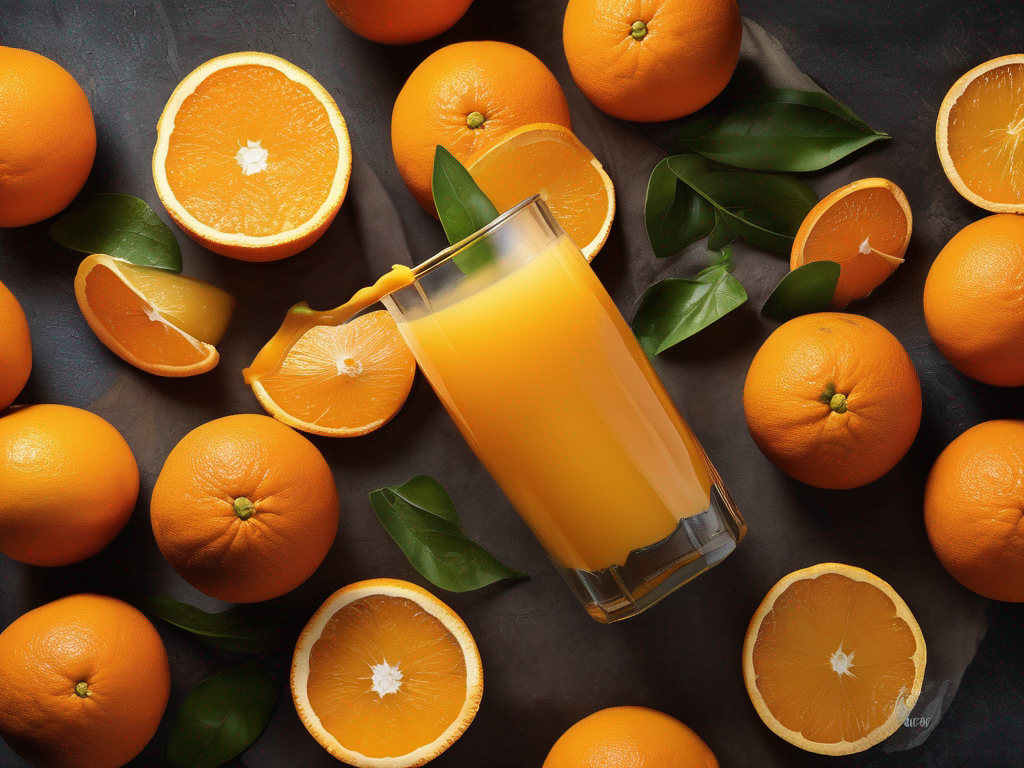
Is Your Orange Juice Still Safe to Drink? How to Tell if it Has Gone Bad
Is Your Orange Juice Still Safe to Drink? How to Tell if it Has Gone Bad
When it comes to enjoying a refreshing glass of orange juice, it's important to ensure that the juice is safe to drink. Orange juice, like any other perishable food item, can go bad if not stored or handled properly. In this blog post, we will explore how to determine if your orange juice has gone bad and provide you with practical tips to ensure the safety of your favorite citrus drink. (Orange juice)
Understanding the Shelf Life of Orange Juice
Orange juice is known for its high vitamin C content and refreshing taste. However, once the juice is exposed to air, light, or heat, it can start to degrade and eventually spoil. Here are some key points to keep in mind about the shelf life of orange juice:
Factors that Affect the Shelf Life of Orange Juice
- Exposure to Air: Oxygen can cause the oxidation of orange juice, leading to changes in color, flavor, and nutrient content.
- Temperature: Storing orange juice at improper temperatures can promote the growth of harmful bacteria.
- Light: Exposure to light can accelerate the degradation of orange juice, causing it to lose its nutritional value.
- Contamination: Cross-contamination with other foods or improper handling can introduce harmful bacteria to the orange juice.
Signs that Your Orange Juice Has Gone Bad
It's essential to be able to recognize the signs that your orange juice has gone bad to avoid potential illness. Here are some indicators that your orange juice may no longer be safe to consume:
Visual Clues
- Mold: If you notice any mold growth on the surface of the orange juice, discard it immediately.
- Discoloration: Changes in color, such as a darkening or cloudiness, can indicate spoilage.
- Pulp Separation: Excessive separation of pulp from the juice may suggest that the orange juice is no longer fresh.
Smell and Taste
- Off Odor: If the orange juice has a sour, musty, or fermented smell, it is likely spoiled.
- Off Taste: A rancid or off-flavor is a clear indicator that the orange juice is no longer safe to drink.
Texture
- Texture Changes: Any unusual texture changes, such as sliminess or curdling, can signal spoilage.
Best Practices for Storing Orange Juice
To extend the shelf life of your orange juice and maintain its freshness, follow these best practices for storing and handling:
Storage Tips
- Refrigeration: Always store orange juice in the refrigerator at temperatures below 40°F (4°C).
- Sealed Containers: Keep orange juice tightly sealed in its original container or an airtight glass jar.
- Avoid Light Exposure: Store orange juice in a dark place or opaque container to prevent light-induced degradation.
- Check Expiry Dates: Always check the expiration date on the orange juice container and consume it before the date indicated.
Handling Guidelines
- Clean Hands: Wash your hands before handling the orange juice to prevent contamination.
- Pour Carefully: Avoid pouring directly from the container into your mouth to prevent backwash or contamination.
- Use Clean Utensils: When pouring orange juice, use clean utensils to avoid introducing bacteria.
Conclusion
Ensuring the safety of your orange juice is essential for enjoying its nutritional benefits and refreshing taste. By being aware of the signs of spoilage, following proper storage practices, and handling orange juice with care, you can prevent potential foodborne illnesses and enjoy your favorite citrus beverage with peace of mind. Remember, when in doubt, it's always safer to discard the orange juice rather than risk consuming spoiled juice. Cheers to safe and delicious orange juice consumption!
For more information on orange juice and other food safety tips, visit our [orange juice](/food/orange juice) page. (Orange juice)
Authoritative Food Safety References
These agencies and university labs inform every tip and health precaution we publish.
USDA FoodKeeper – Cold Storage Guidelines
Official refrigerator, freezer, and pantry timelines maintained by the U.S. Department of Agriculture.
Visit USDA FoodKeeperFDA Produce Safety Rule & Grower Guidance
Field-to-fridge handling practices that prevent contamination of fruits, vegetables, and leafy greens.
Visit FDA Produce SafetyCDC Foodborne Illness Prevention Hub
Surveillance-backed guidance on pathogens, symptoms, and steps to reduce foodborne illness risk.
Visit CDC Food SafetyUC Davis Postharvest Technology Center
University research detailing optimal storage atmospheres for produce after harvest.
Visit UC Davis PostharvestPenn State Extension – Home Food Preservation & Safety
Peer-reviewed extension bulletins on safe canning, chilling, and reheating practices.
Visit Penn State ExtensionScan your food directly and get instant safety info using our AI-powered camera feature.